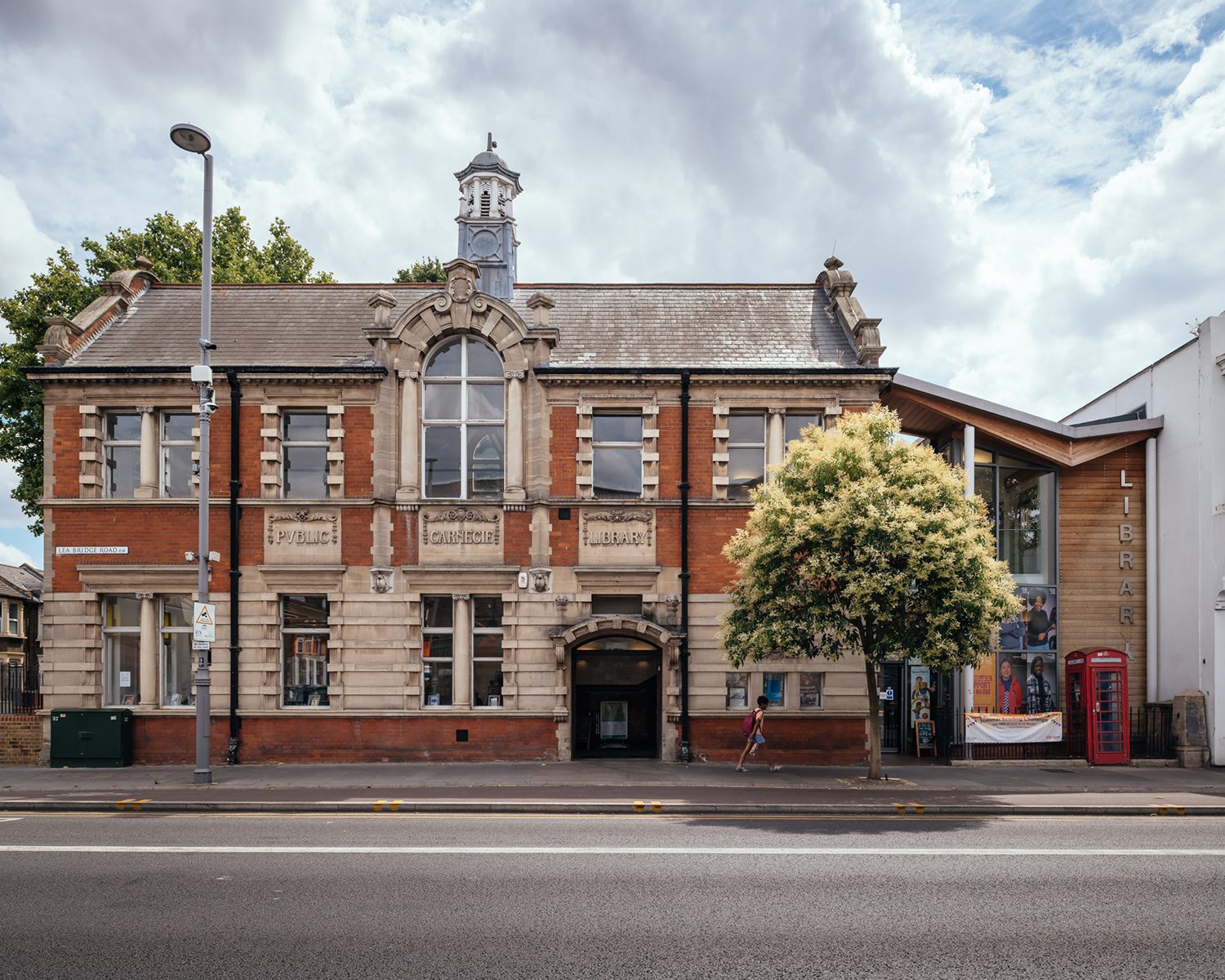Eddie Blake of Studio Weave looks at the Lea Bridge Library, recently extended by Studio Weave, and what it means to genuinely serve a community today.
The communities of Leyton are experiencing dramatic change. Along with other areas around the Olympic Park fringe, this Victorian residential suburb and its light industrial edges, is enjoying quiet resurgence of both public and private investment. New buildings and infrastructure are having a clear impact on local communities in the area – Lea Bridge Library is part of this larger swell of urban change.
Public libraries have embodied democratic access to knowledge for centuries – in the UK, at least since the Public Libraries Act 1850. Something that was once the privilege of the rich and powerful, the library became a tool of emancipation for a wider community. Since it opened in 1905, Lea Bridge Library’s physical and social contexts have been changing rapidly, at the same time it has witnessed seismic shifts in its role as a gateway to knowledge. These shifts are driven by developments in how we now access knowledge – digitisation and public access to data have profoundly impacted the evolution of the library.
Architecture has to respond to evolving functions. We are seeing a growing number of examples of spaces which tie together different functions in ways that are imaginative and surprising. We have book-lined cafes with washing machines; shops with writing programmes for young authors; libraries combined with maker spaces or nursery schools within nursing homes. Wholly new types of place are emerging which house unique combinations of community centre, incubator and talent programmes.
These new combinations can create meaningful spaces, which allow people to participate more fully in public life and maximise our collective resources. They are becoming delightful engine rooms for generating invaluable social outcomes.
The Lea Bridge Library brief recognises these trends. It goes further, seeking to push the evolution of the library: from a public gateway to knowledge to also being a host for civic activities plus broader reasons for people to be there, which might be revenue generating, like the social enterprise café, workspace with free internet access and programmed events. Through blurring functions, the programme builds community, widens access and invites previously under-represented groups into the shared space.
There are few words in architecture which are as elastic in their use and meaning as ‘community’. Whatever criteria you might use to define it, the reality of any community is somehow broader and messier. So, when we are designing ‘community spaces’ the first, and most vexing question is, who is this for.
When thinking through our approach to the Lea Bridge Library we understood that it had to have a much broader ambition than simply the architecture. The ambition being that the architecture, and the process of producing the architecture would ultimately be at the core of Leyton’s diverse communities, both in its physical form and social proposition. Importantly, through our strategic approach, encompassing property concerns, business strategy, and programming alongside the architectural proposition, we hoped to design for that broadest, most messy conception of the ‘community’.
Studio Weave is excited to explore the meaning of the building’s protected function as “library”, the boundary between different types of knowledge access. At times, the explicit content of books for example, at other times, peer-to-peer exchange of tacit knowledge through nurturing interaction in settings such as community wealth building and co-working. By thinking through both social processes, architectural interventions and ultimately embracing the messy complexity of combined functions, we believe we best serve that hard to define but invaluable thing – community.
Read Architecture Today’s coverage of the Lea Bridge Library here.
Source: Architecture Today

